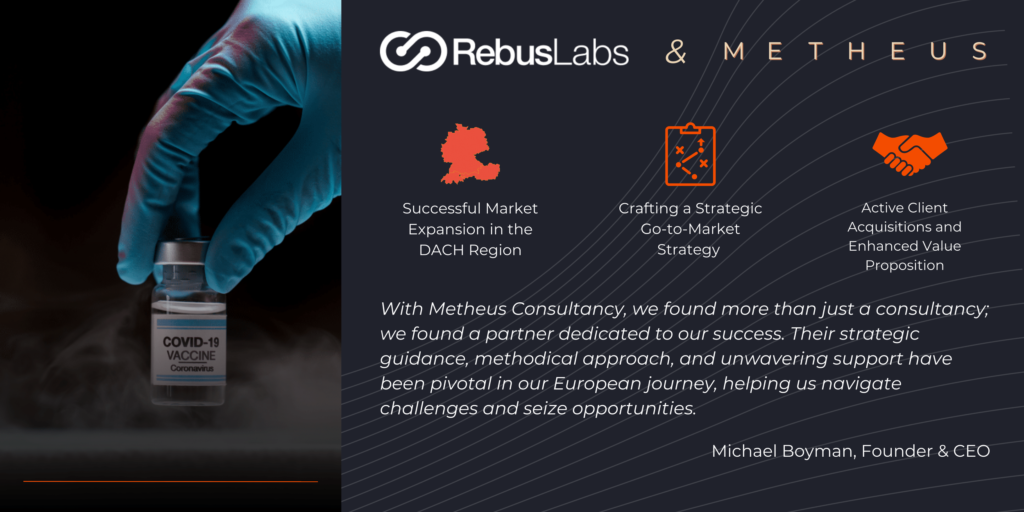Every day, different companies try to solve different problems with their products and services. Every company’s first step is to find people who has the exact problem as the company and want the solution then company is providing.
Whether in your market expansion to other countries or scaling your business, you need a way to find those proper customers and reach to them. The road to take for finding those people comes from a successful lead generation strategy. However, before talking more about it, let’s first discuss what is a lead and what is a lead generation.
A lead is a person who has expressed interest in what you have to offer to some extent. When someone has expressed interest in purchasing your product or service, or has been exposed to it and is now aware of what you do, they might be classified as a lead. While the act of locating and obtaining fresh sales leads is known as lead generation.
Lead generation is essential for any company, mainly for B2B businesses. A lead generation strategy is an execution plan that you can use to drive more prospects in your pipeline. It involves implementing different tactics and tools to create exposure for your business. A good lead generation strategy will allow you to get more people interested in what you have to offer, which ultimately leads to more sales or clients.
Why do you need a lead generation strategy?
The problem is that most companies have no idea how to structure a lead generation strategy correctly. They don’t know how to generate quality leads, and they don’t know what to do with those leads once they’ve generated them. According to a survey done by Viktor Nagorny, 68% of companies admit to struggling with lead generation and it is just the percentage of the ones that accept it. Meanwhile doing a right strategy has a lot of benefits for the company.
You can increase your success rate via lead generation
Having a successful lead generation strategy helps you identify potential customers who are interested in what you have to offer better and quicker, making it easier for you to approach them and improving your chances of having a targeted sales and business development process.
For all companies it is known that purchasing a service or product is a hard and long process. With a successful lead generation strategy, it is more likely to increase your conversion rate and shortening the time it takes leads to decide, which leads to more sales and more company success.
You can decrease your waste of resources
Also, having a successful lead generation strategy means a right audience to engage with. As a result, you won’t need to continue wasting your time, energy, and money pursuing or searching for wrong people or companies who won’t purchase or even be interested in your products/services.
With network effect you can multiply your leads
Lastly, the network effect is a powerful force in business. It’s the phenomenon that occurs when a company or product becomes more valuable as more people use it. When a successful lead generation strategy is implemented, network effect parabolically increases the number of people who’ve heard about your company.
According to a research made by Gartner, B2B buyers spend 50% of their information seeking time with third parties. Which shows how impactful is a network and the information in that network has. So targeting the right people who has positive gains from your product not only increases your customer number by one but increases your leads with its network meaning a lot more than one .
That’s why we believe that it is important to have a roadmap about how to have a strong lead generation strategy and show you how you can do it.
How should you start to create your lead generation strategy?
Start with setting business objectives clearly
You should be clear about what you’re trying to achieve. You need to know your business objectives, and how you’ll achieve them. This will give you a framework for planning your lead generation strategy. You can review your existing business development, marketing and sales funnels to identify how many leads you will require to achieve your customer acquisition goals. Then it is also critical to analyse your team, capabilities, marketing budget, software tools and other resources do decide how much time, effort and investment you need to put in.
Determine your ideal customer profile
One of the most effective ways that you can start to implement a successful lead generation strategy is by using a lean ideal customer profile. An ideal customer profile is a detailed description of the people or companies you want to attract as clients. It includes their characteristics about the company like the number of employees, revenue, or industry. Lots of people also talk about buyer persona, which refers to the person who is involved in a purchasing decision at the company related with your service or product area-Who are they and what roles do they have? What are their jobs to be done, motivations, and goals?
So when you sell a B2B product, your ICP is the company, where a specific buyer persona (e.g. Head of HR) is in charge of the buying process.
The ICP (Ideal Customer Profile) helps you identify who you want to market to so that you can create specific messages and offer products or services that will appeal to them.
Know your Ideal Customer Profile’s pain points & triggers
Knowing your ideal customer profile’s pain points and triggers is one of the most important parts of a successful lead generation strategy. What do they want? What do they need?
The reason for this is simple: if you can successfully identify their pain points, then you have a great starting point for creating your content. And for intriguing the leads trigger points are the road to their interest.
While observing for your customer audience’s pain points, personal gains or jobs to be done, be aware of the dynamics of your market. In any case of market shift which means a change in the market structure or dynamics caused by either external forces or internal forces, your audience’s volume can change significantly. What this means for you is that your customer audience will need to shift as well. You’ll need to determine what new pain points are relevant to your target audience and how these new pain points will affect their buying decisions.
In other words, as a company you need to check your Ideal Customer Profile’s pain points and triggers constantly in case of a change in their behaviour or needs. By being updated, you’ll be targeting the right people by right methodologies by right reasons.
Identify the channels you are going to interact with them
Without engagement, knowing who your Ideal Customer Profiles are and where do you find them are non usable informations. Put yourself in customer shoes. For engaging with your customer audience, you need to know their most used channels and their usage process of those channels. Through these, you can map out their buying process and use this information to understand which channel to use and how to use and when to engage.
You can start to understand buyer process of your prospects, by looking at the data from your existing marketing and sales efforts to see which channels have been performing best. Then use that data as a jumping-off point for identifying new ways to reach leads. Looking for what your competitors are advertising themselves from can be a useful way to gather data too.
Selecting a business development & sales approach
You find the ideal audience, align your resources and selected channels to engage with them. Now, It is time to select an approach that will help your business to grow. Some approach types that any company needs to know include “sense making approach” or in other words “consultative approach”.
According to a report from Salesforce, 84% of business buyers are more likely to buy from sales reps who understand their goals. So as a company who sells their products or services, you need to convince your customers about your understanding of their pain point and your knowledge about its solutions.
Consultative approach, also known as needs-based selling, is the ideal type of approach for this. It is a sales strategy in which representatives behave more like advisors than salespeople.
Sales and business development representatives provide potential customers with a variety of guidance based on their needs and pain points rather than pushing a particular product. So instead of advising just a product, responsible person advises solutions thus, solving their problems or helping your customers to achieve their targets.
Gartner research finds that today’s customers spend 15% of buying time trying to reconcile or deconflict information. If you figure a buying cycle could drag on for 12 to 24 months, that’s two to four months spent trying to make sense of information that could drive a purchase. 55% of surveyed customers say they encounter an overwhelming amount of trustworthy information during the purchase process, so they need to put a significant effort to make the best decision out of those information.
The problem is not finding high-quality/relevant information, the problem is the process of making sense of that found information and navigate the process of reaching a solution right – without wasting unnecessary effort, time or money.
As a company, your approach to all of your customers and employees should include sense-making which means direct and understandable information. If you guide your leads, those leads will turn into purchasers. They’ll want to be sure about everything, they’ll want to make more research which may result in an unnecessary long purchasing period or an incomplete sales. The route to choose this strategy comes from the data you’ve gained from your ICP’s pain points, triggers, channels they use, and their general profile.
Discipline and continuity
The whole business development and lead generation is a process. In order to see meaningful results, reaching to a significant number of people or spending a certain time with your prospects are crucial.
When you’re trying to get more leads, you have to be able to continue doing the things that work and stop doing the things that don’t. In order for this to happen, you need a plan of action with defined processes and systems that everyone can follow every day.
If you are consistent with your approach, then it will become part of your everyday life—instead of something extra or special that only happens when there’s a special event happening or a new promotion being run by one person on their own initiative.
Watching metric & operational success regularly
Through all of these methodologies, you’ll have a target audience that you engage with regularly. But how to be sure you’re on the right path or you need to make some changes in your approach? Are these leads are going to become your buyers?
This constant elimination process will be done by your marketing and sales teams. First you’ll have “Leads” in your hand through all of these processes. Marketing Qualified Leads (MQLs) are the second step in a company’s lead-generation process. They are the people who have expressed interest in your product, service or opportunity. In other words, they are the leads that are verified about being in your Ideal Customer Profiles. Sales Accepted Leads (SALs) are the next step in the sales process. SALs are qualified leads that have passed through your marketing team and have been approved by your sales team as worthy of pursuing. Sales Qualified Leads (SQLs) are prospects who have been researched and vetted – first by an organization’s Marketing department and then by its sales team – and are deemed ready for the next stage in the sales process.
Prepare alternative actions based on different scenarios
Not everything goes the way we planned it to be. To be successful about your strategy, be open to risks. Prepare alternative actions based on different scenarios about your lead generation strategy such as – What if no one responds to your campaign? What if only a few people respond? What if everyone responds?
When you are thinking about backup plans and precautions to take, first step is to analyse the possibility of the risk to happen. While analysing, things that are needed to evaluate include – What is the thread? How vulnerable is my company to this thread? What are the consequences of this?
When you evaluate the answers of all of these questions, you’ll reach your answer to the question of “Is this a big risk?”. If your answer is yes, then it is essential to come up with an alternative plan or maybe immediate precautions. If not, then a backup plan would be sufficient.
Successful lead generation strategy comes from a combination of different steps in your organisation
In conclusion, it can be easily said that leads and lead generation are essential for the continuity and success of a company. Thus, a lead generation strategy is a necessity which has lots of benefits if done successfully. So, the question of how can we create a successful lead generation strategy arises here. The answer has multiple points in it: Determining your company’s ICP, identifying your audience’ pain points & triggers, reaching them through the right channels with the usage of these points, implementing a sense-making approach in your business development and sales process, being persistent about your strategy, checking success metrics regularly to monitor the progress and not giving up while being ready to change some points if a risk arises.
All of these points and determination process may seem hard at the beginning but with time, it becomes natural processes to implement and your lead generation strategy will be a part of your daily life.
To ease this process Metheus is always ready to help!
If you are interested in creating a lead generation strategy but don’t know what to do or looking for somebody who’ll guide you through it all, Metheus is ready for your help. Contact us to discuss how to get started! Let’s generate your future leads together!









